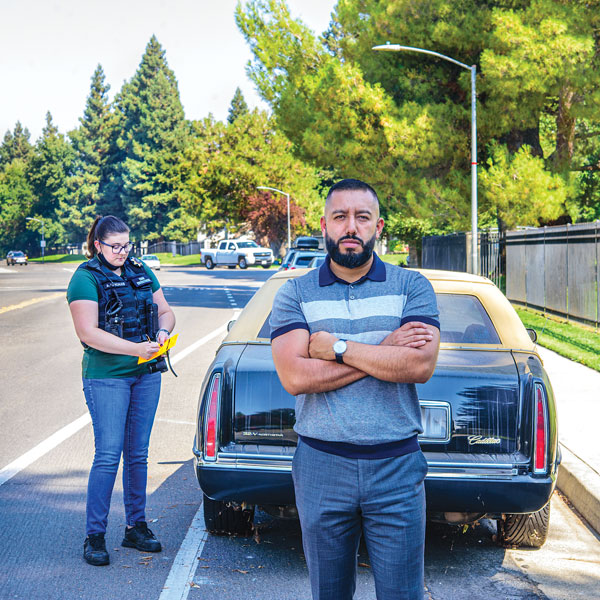Abandoned cars don’t hide well. They are filthy from sitting in the wind and sun.
Windows are covered with dust. Tires slump as the air slowly drains away. Cobwebs grow in wheel wells. Anyone walking past can tell, yes, no doubt, there’s an abandoned car.
Pocket and Land Park have never been known for attracting large numbers of abandoned cars, but this historical trend is shifting. In recent months, abandoned cars have been found on Havenside Drive, Greenhaven Drive and 43rd Avenue. A resident named Duwayne Brooks, who enjoys daily neighborhood walks of about 1½ miles near his Pocket home, tells me he has found more than 30 abandoned cars in recent weeks.

He finds most of them near apartment communities, which may be a coincidence. It could be people who live in apartments abandon cars in disproportionate numbers. Or it could be drivers figure they will draw less attention if they abandon their vehicles near apartments. It’s impossible to say what happens. The owners are gone. The cars are silent.
“Just drive down any street in Greenhaven and you can see cars covered with dirt that haven’t moved in months,” Brooks tells me. “Some are so damaged they are un-drivable. It’s a blight to the neighborhood and in some cases a hazard to driving, walking and biking residents. It’s an epidemic and I don’t have an answer.”
Hearing Brooks’ story, I wanted to learn what’s going on with all the abandoned cars. I asked the police, but they weren’t aware of the problem. It was news to them.
The cops suggested I check with city code enforcement. When I spoke with Jose Mendez, who runs code enforcement, it instantly became clear the problem is big and messy and not easily solved. There’s more to abandoned cars than I realized.
First of all, any car is considered abandoned if it sits on a city street for more than three days. “That’s not something we’ve been enforcing during COVID,” Mendez says. “But yes, three days.”
Second, some abandoned cars have been stolen, but the city can easily spot them if they still have license plates. The city routinely patrols streets with specially equipped vehicles that read license numbers and recognize anything reported stolen. “Once we flag a stolen vehicle with our license plate readers, we’ll contact the registered owner or have it towed if it’s not drivable,” Mendez says.
Third, many abandoned vehicles aren’t abandoned. They are homes for homeless people. If a code enforcement officer finds evidence of occupancy around an abandoned car, the discovery triggers a social response with outreach teams, not tow trucks. “An occupied vehicle is complicated,” Mendez says.
Finally, some abandoned cars are just that—abandoned. When the pandemic emptied offices and shops and kept many workers home, some realized they didn’t need a second (or third) car. They parked it on the street and walked away.
Mendez believes working from home explains most of the abandoned cars. “Right now we have a backlog of 166 abandoned cars in Pocket and Land Park,” he says. “The usual number is one-third of that. Those cars are just sitting there. People aren’t aware of the fact that they have to be moved every three days.”
City code enforcement has been running several weeks behind as it chases down complaints. The department has 12 officers in the field, six below capacity. Mendez is scrambling to hire more staff. Across the city, his officers are plowing through 3,000 complaints. They involve not just abandoned cars but everything.
“If you know an abandoned car belongs to your neighbor, it’s best to just have a conversation with them,” Mendez says. “Ask them nicely to move it.”
If that doesn’t work, code enforcement will take over. “Vehicles are our priority,” Mendez says. “We’ll get to all of them eventually.”
R.E. Graswich can be reached at regraswich@icloud.com. Follow us on Facebook, Twitter and Instagram: @insidesacramento.
















